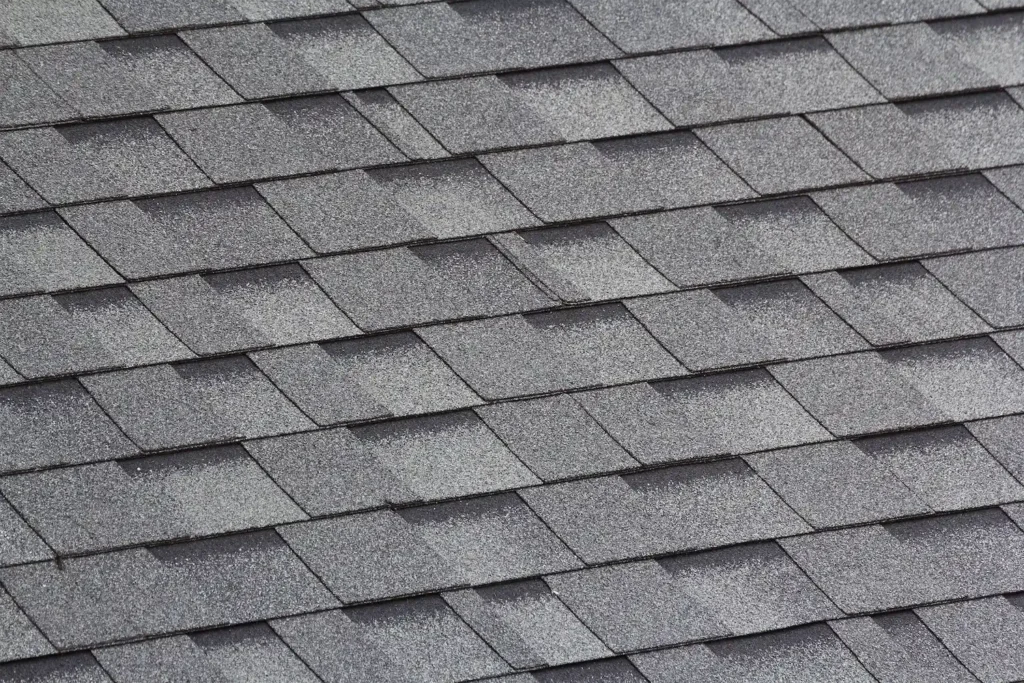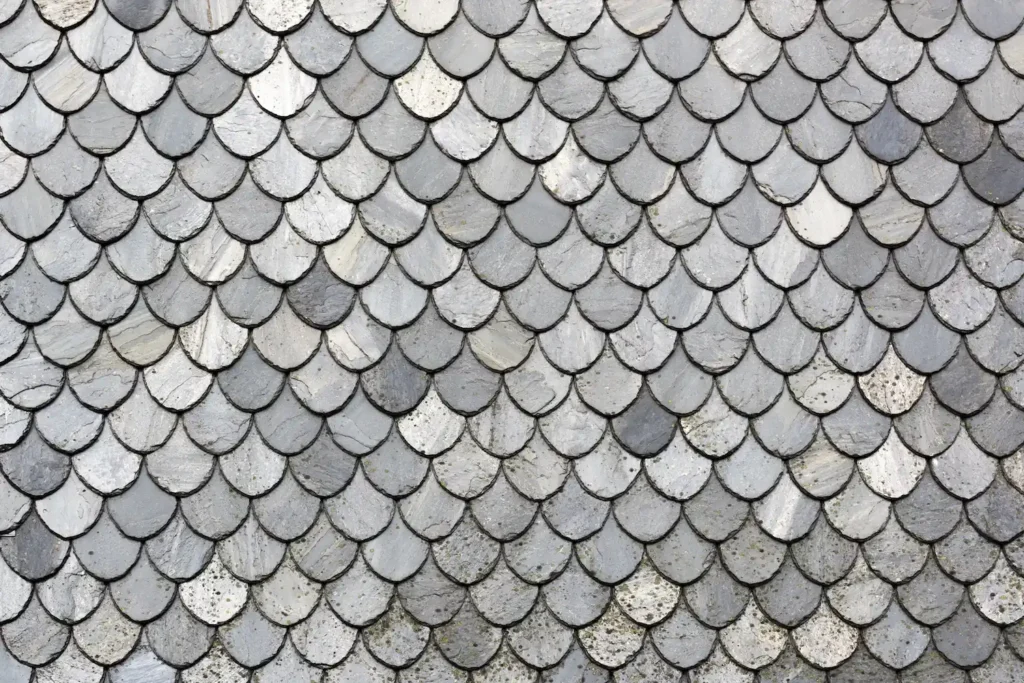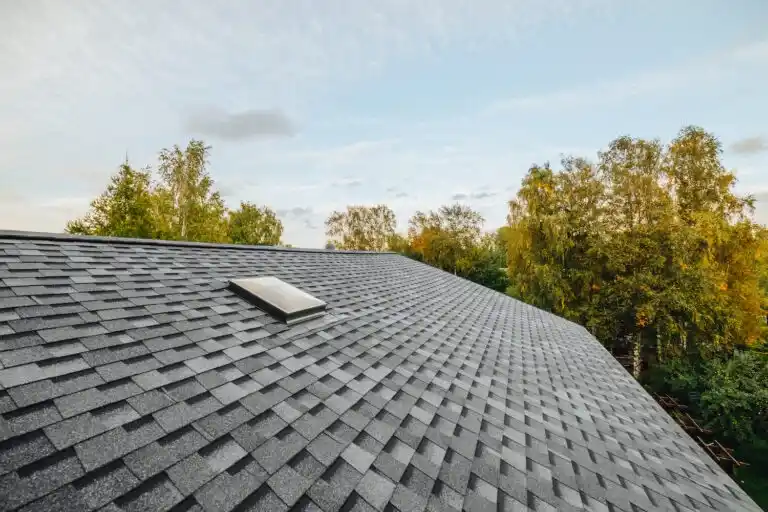Though most roofs can last several years or decades, they don’t all enjoy the same lifespan. But how long does a roof last? The answer often depends on the material!
To ensure you replace your roof when needed (and choose a long-lasting replacement roof), let’s explore how long a roof lasts by examining different roof materials and their expected lifespans.
We’ll also briefly discuss factors that impact roof longevity, ensuring that your current and future roofing enjoys the longest possible lifespan. Let’s begin!
ASPHALT SHINGLE ROOFING

Asphalt shingles are the most common material used for roofs, in no small part due to their affordability and ease of installation. But one of the major drawbacks of this material is its durability and longevity.
The average asphalt roof replacement occurs every 10 to 20 years, depending on homeowner maintenance and external factors like extreme weather.
These types of roofs also experience their fair share of problems. Roof leaks and missing shingles are a common issue homeowners with asphalt roofs experience. So, if you’d like to minimize roof repairs, you may want to opt for a different material.
METAL ROOFING
This type of roof comes in practically every imaginable style and shape. Additionally, there are several types of metals used to create this type of roof, with some of the most common being:
- Galvanized steel
- Stainless steel
- Aluminum
- Copper
- Zinc
- Brass
The durability of each of these metals varies, and some are more prone to corrosion than others (a factor that significantly impacts a metal roof’s lifespan). That said, the average metal roof is built to last an average of 50 years, though some may endure for longer (up to 70 years) when properly maintained.
CEDAR SHAKE ROOFING
Cedar shake roofing is one of the most popular types of wood roofing available, and it’s not challenging to understand why. This wood roof has a classic look that can add a touch of elegance to any home.
However, cedarwood isn’t the most naturally durable material. Though cedar shake shingles are treated, helping them remain water-resistant and preventing rot, their average lifespan averages about 30 years.
While this does make cedar shake roofing a longer-lasting alternative to asphalt shingles, wood-based aren’t as long-lived as metal, clay, or stone roofs.
CLAY TILE ROOFING
Clay tile roofs are more expensive than other roof types, but they’re also attractive, iconic, and long-lasting. If you’ve ever seen a classic Hollywood mansion or Italian-inspired mini-mansion, you’re likely familiar with these curved clay tiles and their reddish-orange hues.
Unlike asphalt, which can melt when exposed to extreme heat, clay tends to become more durable when exposed to prolonged bouts of sunlight, making it an ideal material for homes in sunny, warm areas.
Besides, clay tiles can remain in tip-top shape for the better part of a century (up to 100 years), making it a smart long-term investment for property owners hoping to get the most out of their new roof.
Naturally, as with all other roofs, maintenance is a crucial part of ensuring a clay tile roof enjoys the maximum possible lifespan.
SLATE TILE ROOFING

Unlike asphalt shingles and sheet metal, both of which are highly processed materials, slate tile is essentially natural stone shaped into small squares or rectangles. So, if you’re looking for a natural alternative for your new roof, you may want to consider investing in slate.
Besides, the dark grey-blue tiles of a slate roof can add a little elegance to a home. This material is also prized for its durability, and most slate roofs can easily last decades, if not centuries.
Looking for the longest-lasting possible option for your roof? If so, you’ll want to consider investing in hard slate tiles!
SOLAR TILE ROOFING
Solar tile (also called solar shingles) is one of the newest materials available to homeowners, and it’s also one of the most beneficial in terms of energy savings.
Much like rooftop solar panels, solar tiles absorb energy from the sun and transfer that energy into usable electricity. As such, outfitting your home’s roof with solar roof shingles could be a smart way to reduce your electricity bill while embracing a more sustainable energy source.
But how long do solar tiles last?
The answer typically depends on the tile brand, but most are designed to last at least 20 years (like asphalt shingles). If you’re interested in using solar shingles, check your chosen tile’s warranty and inquire with the manufacturer about the material’s estimated lifespan.
WHAT FACTORS IMPACT ROOF LONGEVITY?
Material longevity isn’t the only aspect you should consider when replacing a roof. After all, each material has specific weaknesses and strengths.
For example, a steel roof could be a fantastic choice for homes in dry, arid areas.
But the same roof type could be a liability if installed on a coastal home exposed to plenty of salt, wind, and rainfall. That’s because metal corrodes more quickly when it comes into contact with these natural elements!
Understanding which factors impact roof longevity is a fantastic way to ensure you choose the best possible (and longest-lasting) material for your new roof.
Generally, the three most crucial factors that impact a roof’s lifespan are:
- Environment
- Maintenance
- Material
Environmental factors, such as weather, are the most impactful regarding roof longevity. Even the hardiest roof can suffer damage due to excessive sun exposure, high winds, fallen tree limbs, or invasive insects and animals.
However, regular maintenance can help prevent and remedy many issues caused by environmental factors. Failing to invest in regular (annual or bi-annual) roof maintenance is a surefire way to shorten the lifespan of your roof.
Lastly, there’s the issue of material. Some roofing materials, like fired clay shingles or natural slate, are dense and sturdy enough to avoid damage from environmental factors like UV rays or frozen temperatures.
Others, like asphalt shingles, are far more likely to crack under the pressure of inclement weather and extreme temperatures.
So, suppose you’d like to ensure that your roof enjoys the longest possible lifespan. In that case, selecting material appropriate for your environment is crucial, as is engaging in regular roof maintenance and choosing a naturally durable material.
FINAL THOUGHTS
The average roof can last, on average, about 25 years. However, some roofs last about twice as long, particularly those made of stone (like slate) or hard clay. Some metal roofs can also last about 50 years, especially when properly maintained.
The material with the shortest average lifespan is asphalt, which typically lasts about 20 years. Asphalt shingle roofs are far more susceptible to environmental dangers (including high winds and freezing weather) than other roofing materials.
Not sure which material is best for your roof? Contact a reliable roofing company today for a consultation!



